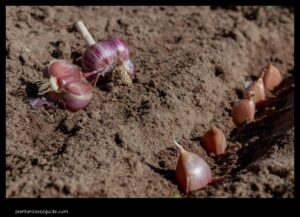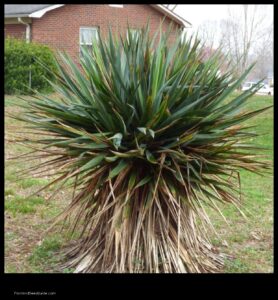 </p>
</p>
Why is my spider plant turning yellow and brown
Spider plants are one of the most popular houseplants, and for good reason. They’re easy to care for, they’re tolerant of a wide range of conditions, and they produce beautiful, cascading foliage. However, like all plants, spider plants can sometimes experience problems. One of the most common problems is yellow and brown leaves.
There are a number of reasons why your spider plant’s leaves might be turning yellow and brown. Here are some of the most common causes:
- Watering problems. Spider plants are drought-tolerant plants, but they can still suffer from overwatering or underwatering. If you’re not watering your spider plant correctly, it can cause the leaves to turn yellow and brown.
- Nutrient deficiency. Spider plants need a regular supply of nutrients to stay healthy. If your plant is not getting enough nutrients, it can cause the leaves to turn yellow and brown.
- Light problems. Spider plants need bright, indirect light to thrive. If your plant is not getting enough light, it can cause the leaves to turn yellow and brown.
- Pest infestation. Spider plants can be susceptible to a number of pests, including aphids, mealybugs, and spider mites. If your plant is infested with pests, it can cause the leaves to turn yellow and brown.
If you think your spider plant’s leaves are turning yellow and brown because of one of these problems, you can try to fix the problem by following these steps:
- Water your spider plant correctly. Water your spider plant only when the soil is dry to the touch. Avoid overwatering, as this can lead to root rot.
- Fertilize your spider plant regularly. Feed your spider plant with a balanced fertilizer once a month during the growing season.
- Provide your spider plant with bright, indirect light. Place your plant in a spot where it will receive bright, indirect light for most of the day.
- Inspect your spider plant for pests. Check your plant regularly for signs of pests, such as aphids, mealybugs, and spider mites. If you find any pests, treat your plant with an insecticide or insecticidal soap.
By following these steps, you can help to keep your spider plant healthy and prevent its leaves from turning yellow and brown.

Preventing yellow and brown leaves
In addition to fixing the problems that can cause yellow and brown leaves, there are a few things you can do to help prevent these problems from happening in the first place. Here are some tips:
- Choose a healthy plant. When choosing a spider plant, look for a plant that is free from pests and diseases.
- Water your plant correctly. Water your spider plant only when the soil is dry to the touch. Avoid overwatering, as this can lead to root rot.
- Fertilize your plant regularly. Feed your spider plant with a balanced fertilizer once a month during the growing season.
- Provide your plant with bright, indirect light. Place your plant in a spot where it will receive bright, indirect light for most of the day.
- Inspect your plant regularly for pests. Check your plant regularly for signs of pests, such as aphids, mealybugs, and spider mites. If you find any pests, treat your plant with an insecticide or insecticidal soap.
By following these tips, you can help to keep your spider plant healthy and prevent its leaves from turning yellow and brown.
Common mistakes that cause yellow and brown leaves
There are a few common mistakes that can cause spider plants to develop yellow and brown leaves. Here are some of the most common mistakes to avoid:
- Overwatering. One of the most common causes of yellow and brown leaves on spider plants is overwatering. Spider plants are drought-tolerant plants, and they can actually do more harm than good if you water
Topic Answer Spider plant yellowing - Overwatering
- Underwatering
- Lack of sunlight
- Nutrient deficiency
- Pests
Spider plant browning - Overwatering
- Drought
- Sunburn
- Nutrient deficiency
- Pests
Spider plant care - Water your spider plant when the top 2 inches of soil are dry
- Place your spider plant in a bright spot, but avoid direct sunlight
- Fertilize your spider plant every 2-3 months with a balanced fertilizer
- Repot your spider plant every 2-3 years as needed
Spider plant problems - Yellowing leaves
- Browning leaves
- Wilting leaves
- Root rot
- Pests
Spider plant pests - Spider mites
- Aphids
- Mealybugs
- Scale insects
- Thrips
ICauses of yellow and brown leaves
There are a number of reasons why your spider plant may be turning yellow or brown. Some of the most common causes include:
- Overwatering
- Underwatering
- Too much sunlight
- Too little sunlight
- Nutrient deficiency
- Pests
- Disease
How to fix yellow leaves
If your spider plant’s leaves are turning yellow, there are a few things you can do to fix the problem.
- First, check the soil moisture. Spider plants like to be watered regularly, but they don’t like to sit in wet soil. If the soil is too wet, the roots can start to rot, which will cause the leaves to turn yellow.
- Second, check the sunlight exposure. Spider plants need bright, indirect sunlight to thrive. If they’re not getting enough light, the leaves will start to turn yellow.
- Third, check for pests. Spider plants can be susceptible to a variety of pests, including spider mites, mealybugs, and aphids. If you see any pests on your plant, treat them with a neem oil or insecticidal soap solution.
- Fourth, fertilize your plant. Spider plants do not need a lot of fertilizer, but they will benefit from a light application of fertilizer once a month during the growing season.
How to fix brown leaves
If your spider plant leaves are browning, there are a few possible causes.
Overwatering: Spider plants are drought-tolerant plants, and they can easily be overwatered. If you water your spider plant too often, the roots will start to rot, and the leaves will turn brown. To fix this problem, you need to cut back on watering and allow the soil to dry out completely between waterings.
Underwatering: Spider plants also need to be watered regularly, but they can also be underwatered.
To fix this problem, you need to water your spider plant more often and make sure that the soil is always moist, but not soggy.If you don’t water your spider plant enough, the leaves will start to wilt and turn brown..
Too much sun: Spider plants prefer bright, indirect light. If they are exposed to too much direct sunlight, the leaves can burn and turn brown. To fix this problem, you need to move your spider plant to a location where it will receive bright, indirect light.
Too little sun: Spider plants also need some sunlight in order to thrive.
To fix this problem, you need to move your spider plant to a location where it will receive more sunlight.If they are not getting enough sunlight, the leaves will start to turn yellow and brown..
Nutrient deficiency: Spider plants need a variety of nutrients in order to grow and thrive. If they are not getting enough nutrients, the leaves can start to turn yellow and brown. To fix this problem, you need to fertilize your spider plant regularly with a balanced fertilizer.
Pests: Spider plants can be affected by a variety of pests, including aphids, mealybugs, and spider mites.
To fix this problem, you need to treat your spider plant with an insecticidal soap or neem oil.If your spider plant is infested with pests, the leaves can start to turn yellow and brown..
Preventing yellow and brown leaves
Here are some tips to help prevent your spider plant from getting yellow or brown leaves:
- Water your spider plant regularly, but don’t overwater it.
- Make sure your spider plant is getting enough sunlight.
- Fertilize your spider plant every few months with a balanced fertilizer.
- Repot your spider plant every few years as it grows.
- Check your spider plant for pests and diseases regularly and treat them if necessary.
VCommon mistakes that cause yellow and brown leaves
There are a few common mistakes that can cause yellow and brown leaves on spider plants.
- Overwatering
- Underwatering
- Too much light
- Too little light
- Insect infestations
- Disease
Let’s take a closer look at each of these mistakes and how to avoid them.
When to worry about yellow and brown leaves
It is normal for spider plants to lose a few leaves every now and then. However, if you notice that your spider plant is losing a lot of leaves or if the leaves are turning yellow or brown quickly, it may be a sign of a problem.
Here are some things to look for that may indicate that your spider plant is in trouble:
- The leaves are turning yellow or brown from the tips inward.
- The leaves are curling or wilting.
- The leaves are falling off the plant.
- The plant is not producing new leaves.
- The plant is looking unhealthy overall.
If you notice any of these signs, it is important to take action to correct the problem. The sooner you address the issue, the better chance your spider plant has of recovering.
Here are some tips on what to do if your spider plant is turning yellow or brown:
- Check the soil moisture. Spider plants like to be watered regularly, but they can also be susceptible to overwatering. Make sure the soil is moist but not soggy.
- Check the drainage. Spider plants need good drainage to prevent their roots from rotting. If the pot does not have drainage holes, make sure to repot the plant in a pot that does.
- Check the light. Spider plants need bright, indirect light to thrive. If your plant is not getting enough light, it may start to turn yellow or brown.
- Check the temperature. Spider plants prefer warm temperatures between 65 and 80 degrees Fahrenheit. If the temperature is too cold or too hot, your plant may start to show signs of stress.
- Check for pests. Spider plants can be susceptible to pests such as spider mites, mealybugs, and aphids. If you notice any pests on your plant, treat them with an insecticidal soap or neem oil.
By following these tips, you can help your spider plant recover from yellowing and browning leaves.
FAQ
Q: Why are my spider plant leaves turning yellow and brown?
A: There are a few possible reasons why your spider plant leaves are turning yellow and brown.
Overwatering: Spider plants are susceptible to overwatering, which can cause the roots to rot and the leaves to turn yellow and brown.
The soil should be dry to the touch before you water it again.If you think you may be overwatering your spider plant, check the soil before watering..
Underwatering: Spider plants also need to be watered regularly, but they can tolerate some drought conditions. If you underwater your spider plant, the leaves will start to turn yellow and brown. Make sure to water your spider plant regularly, and check the soil before watering to make sure it is dry.
Too much sun: Spider plants prefer bright, indirect light.
If you think your spider plant is getting too much sun, move it to a spot with more indirect light.If they are exposed to too much direct sunlight, the leaves can burn and turn yellow and brown..
Not enough sun: Spider plants also need some sunlight to thrive. If they are not getting enough sun, the leaves will start to turn yellow and brown. If you think your spider plant is not getting enough sun, move it to a spot with more direct light.
Nutrient deficiency: Spider plants need a balanced fertilizer to thrive. If they are not getting enough nutrients, the leaves can start to turn yellow and brown. If you think your spider plant is not getting enough nutrients, fertilize it according to the package directions.
Pests: Spider plants can be affected by a variety of pests, including aphids, mealybugs, and spider mites. If your spider plant is infested with pests, the leaves can start to turn yellow and brown. If you think your spider plant has pests, treat it with an insecticide according to the package directions.
Q: How can I fix yellow and brown leaves on my spider plant?
A: If your spider plant leaves are turning yellow and brown, there are a few things you can do to fix the problem.
Check the watering schedule. If you think you may be overwatering or underwatering your spider plant, adjust your watering schedule accordingly. Make sure to water your spider plant regularly, but only when the soil is dry to the touch.
Move the plant to a different location. If your spider plant is getting too much sun or not enough sun, move it to a spot with more indirect light or more direct light.
Fertilize the plant. If your spider plant is not getting enough nutrients, fertilize it according to the package directions.
Treat the plant for pests. If your spider plant is infested with pests, treat it with an insecticide according to the package directions.
Q: How can I prevent yellow and brown leaves on my spider plant?
A: There are a few things you can do to prevent yellow and brown leaves on your spider plant.
Water your spider plant regularly, but only when the soil is dry to the touch.
Keep your spider plant in bright, indirect light.
Fertilize your spider plant regularly, according to the package directions.
Inspect your spider plant regularly for pests and treat them if necessary.
Q: When should I worry about yellow and brown leaves on my spider plant?
A: If you only have a few yellow or brown leaves on your spider plant, you don’t need to worry. However, if the majority of the leaves are turning yellow or brown, or if the leaves are starting to fall off, you should take action to fix the problem.
Q: What are some other common problems with spider plants?
A: Spider plants can also be affected by a variety of other problems, including:
Root rot: Root rot is a fungal infection that can cause the roots of the spider plant to rot and die. Root rot is often caused by overwatering.
Mealybugs: Mealybugs are small, white insects that feed on the sap
Conclusion
Spider plants are relatively easy to care for, but they can still develop yellow and brown leaves if they are not properly cared for. By following the tips in this article, you can help your spider plant stay healthy and green.
If you are still having trouble with your spider plant, you can consult with a local gardening expert or a plant care specialist.
Resources
- Why is my spider plant turning yellow?
- How to fix brown spider plant leaves
- Spider plant care
- Spider plant problems
- Spider plant pests and diseases
ICauses of yellow and brown leaves
How to fix yellow leaves
How to fix brown leaves
Preventing yellow and brown leaves
VCommon mistakes that cause yellow and brown leaves
When to worry about yellow and brown leaves
FAQ Q: What does it mean when my spider plant leaves are turning yellow?
A: There are a few possible causes of yellow leaves on spider plants, including:
- Overwatering
- Underwatering
- Too much fertilizer
- Too little sunlight
- Insect infestation
Q: What does it mean when my spider plant leaves are turning brown?
A: There are a few possible causes of brown leaves on spider plants, including:
- Too much sunlight
- Cold weather
- Drought
- Insect infestation
Q: How can I fix yellow leaves on my spider plant?
A: If your spider plant leaves are turning yellow, you can try the following:
- Check the soil moisture and water your plant accordingly.
- Fertilize your plant according to the package directions.
- Move your plant to a location with more or less sunlight, depending on the cause of the problem.
- Treat your plant for insect infestation, if necessary.
Latest posts by Katie Owen (see all)- Wild Rose Country: Exploring Untamed Beauty - July 15, 2024
- Wildflower Nursery Decor: Bringing Nature Indoors - July 15, 2024
- Young Sprout of Grass: Nurturing New Life - July 15, 2024







